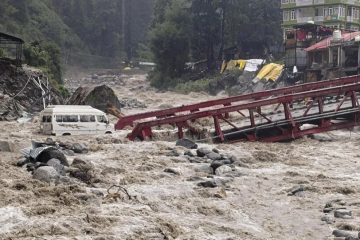Exploring the Richness of Guyana: Opportunities and Growth

Introduction
Guyana, located on the northeastern coast of South America, is a nation poised for significant growth due to its recent discoveries of oil reserves and rich biodiversity. This English-speaking country has been gaining attention globally as it steps into a new economic era, attracting investments and stirring the interest of international stakeholders. Understanding Guyana’s current landscape is crucial, not only for investors but also for those interested in its cultural and ecological significance.
Economic Development
In recent years, Guyana’s fortunes changed dramatically with the discovery of substantial offshore oil reserves by ExxonMobil and its partners. These discoveries have set the stage for a transformational impact on Guyana’s economy. The government’s projections suggest that oil production could lead to GDP growth rates above 25% in the coming years, making it one of the fastest-growing economies in the world.
As Guyana capitalizes on its oil wealth, there is also a concerted effort to diversify its economy. The agricultural sector, known for its production of rice, sugar, and other cash crops, is being reformed to be part of this economic evolution. Investments in infrastructure, education, and healthcare are pivotal as the nation aims to ensure that the oil boom leads to broader benefits for its population.
Biodiversity and Ecological Significance
Guyana is home to vast rainforests, unspoiled landscapes, and a wealth of flora and fauna, making it an important area for biodiversity. Approximately 80% of the country is covered in forest, including parts of the Amazon rainforest, which is known for its ecological systems. Conservation efforts are ongoing, reflecting the government’s commitment to sustainable development alongside economic growth. This balance is essential as the country navigates pressures from industrialization and development.
Cultural Landscape
Guyana is enriched with a diverse cultural heritage influenced by its Indigenous peoples, African, Indian, Chinese, and European colonizers. This melting pot of cultures is reflected in its vibrant festivals, delectable cuisine, and traditional music. Events like Mashramani, which celebrates the nation’s republic status, showcase the cultural diversity and unity of the Guyanese people. Such cultural vitality not only enhances national identity but also can attract tourism, further fueling economic growth.
Conclusion
Guyana stands at a crossroad of opportunity, fueled by its oil discoveries and rich cultural and ecological heritage. As it embraces economic growth, the challenge will be to ensure that this growth is sustainable and beneficial for all its citizens. For investors and stakeholders, understanding Guyana’s landscape is vital in forging partnerships that respect both its cultural roots and ecological responsibilities. The nation’s journey ahead is one of promise, and it will be intriguing to observe how it balances development with preservation in the years to come.








